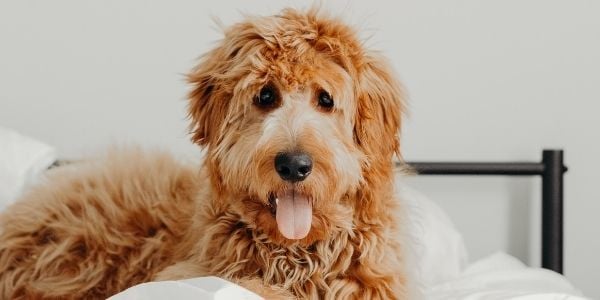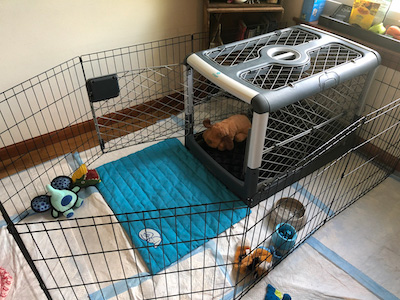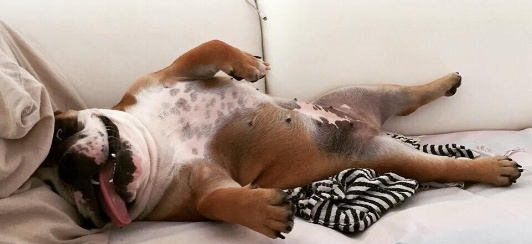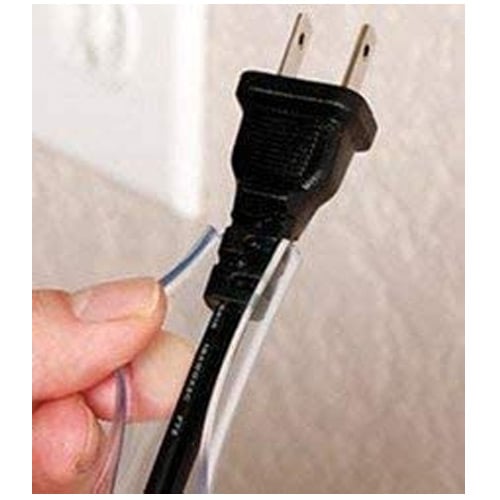 Congratulations, you're getting a new dog! Welcoming a new puppy or adopted dog into your home is an exciting journey. But don't let the excitement drown out the need for preparation and planning to ensure it all goes well.
Congratulations, you're getting a new dog! Welcoming a new puppy or adopted dog into your home is an exciting journey. But don't let the excitement drown out the need for preparation and planning to ensure it all goes well.
There's a lot that goes into preparing for a new pup in the home, especially if this is your first dog.
I've had dogs all my life, and the last time I brought a puppy home, I remembered multiple things I had forgotten to do or get as I was driving to pick him up!
The most important thing is to ensure your new dog's safety and well-being, as well as setting you both up for long-term success. Puppy-proofing your home not only protects your belongings but also sets the stage for a well-behaved dog long term.
Below are checklists for dog-proofing and planning to help you create a safe and nurturing space for your new companion.
Table of Contents
Puppy Prep: Health & Safety Checklist
1. Secure Trash and Other Hazardous Items
Puppies are naturally curious and may explore trash cans, which can lead to ingestion of toxic foods or suffocation in snack bags. Make your trash bins pet-proof by using locking lidded trash cans and blocking access to them by keeping them out of your dog's area.
Keep personal items like purses, backpacks, and gym bags out of reach, as they often contain items like medications, chocolate, or sugar-free gum, made with xylitol, which is extremely toxic to dogs. If you have children, make sure they practice hanging up their backpacks after school and empty them of lunch boxes or snacks.
2. Manage Electrical Cords and Cables
If your puppy chews on electrical cords, it can result in shocks or burns, or even a fire. Organize and conceal cords using sturdy covers. Providing a variety of appropriate chew toys for your dog can help prevent destructive chewing by redirecting this natural behavior.
3. Store Medications and Chemicals Safely
Human medications and household cleaning chemicals pose significant risks if ingested by dogs. Ensure all medications and cleaning supplies are stored securely in cabinets or areas inaccessible to your dog.
Always dispense medications over a sink to contain any spills and prevent accidental ingestion.
Here is a list of pet-safer cleaning options.
Items like antifreeze and polyurethane glues are enticing to dogs because they often taste good but they are very harmful.
4. Identify and Remove Toxic Plants
Certain houseplants can be toxic to dogs, causing symptoms ranging from mild stomach upset to severe organ failure. Research your existing plants and remove or relocate any that are harmful, such as Sago Palm, Philodendron, Cyclamen, and Autumn Crocus.
Consult our list of toxic plants for more information, and if you're a plant person like I am, check out these dog-safe houseplants to get instead.
 5. Safeguard Elevated Spaces
5. Safeguard Elevated Spaces
A fall can cause major injuries for dogs, especially puppies whose bones are still growing. Prevent falls from high places by blocking access to balconies, decks, and stairs.
Train your puppy to use pet stairs or ramps to get on and off furniture. Ensure railings are secure and consider using barriers to keep your puppy from squeezing through openings.
6. Secure Small Objects and Choking Hazards
Puppies explore the world with their mouths, making small objects a target and a potential choking hazard.
Keep items like small toys, knick-knacks, and especially batteries and battery-operated items like remote controls out of reach.
Regularly check your home for any objects that could be swallowed or cause harm if ingested and pick them up.
7. Find a Local Veterinarian
Establishing care with a trusted veterinarian is essential for your puppy's health. And you don't need to wait until you bring your puppy home to start looking.
Schedule an initial check-up and any needed vaccinations as soon as you can to keep your pup on track for a healthy start. Your veterinarian can also provide guidance on preventive care and answer any questions you have about your puppy's health.
Puppy Prep: Setting Up Boundaries
 1. Establish Designated Puppy Areas
1. Establish Designated Puppy Areas
Creating specific areas and designating off-limits rooms helps to manage your puppy's environment and reduces the risk of accidents.
Use baby gates to confine your puppy to safe zones, and set up a puppy playpen area to use when you can't be actively supervising them.
This approach also aids in potty training, alone time practice, and helps prevent unwanted behavior problems. Click here for tips for setting up your Puppy Zone.
2. Create and Maintain Consistent Routines
Establishing a routine for feeding, potty breaks, playtime, and sleep helps your puppy acclimate to a new home and reduces anxiety. But don't make the routine super strict. You want your dog to have some flexibility and learn that some days you get to sleep in! Learn more about creating a reasonable routine for your dog here.
3. Think Ahead About Your House Rules
Meet with all your family members or roommates and talk about what is and isn't allowed when it comes to your new dog's access and behavior.
Ask questions like whether the dog will be allowed on furniture or not? Sleep in the bed or on the floor or in a crate?
Agreeing on these things beforehand reduces confusion for your new pup and helps them understand expectations. Plus, it's much easier to teach them to stay off furniture from the beginning than try and train them to stay off after they've learned how comfy it is.
Download a House Rules Worksheet here.

Puppy Prep: Behavior & Development
1. Educate Yourself About Your Puppy's Breed or Breed Mix
Understanding your dog's broad genetics can provide valuable insights into their behavior, energy levels, training, and enrichment needs. Research breed-specific traits and tendencies so you know how to meet your new dog's needs and know what behavioral challenges you are more likely to see as they grow.
A great resource is the book Meet Your Dog by Kim Brophey, which offers an in-depth look at how genetics and environment shape your dog's behavior.
2. Make a Plan for Socialization
Early puppy socialization is CRUCIAL in preventing behavior problems, and you do not need to wait until your puppy has all of their vaccines to start socialization. It's more than just meeting people and other dogs –– you want to create positive or neutral associations with a variety of experiences during your puppy's critical imprint period (between 7 and 16 weeks old).
Get tips on when and how to start socialization here.
3. Get Puppy Enrichment Supplies
Boredom can lead to destructive behavior, but exercise and enrichment prevent boredom! Have some interactive toys, edible chews, and other enrichment supplies ready to go from day one. Get breed group-specific enrichment suggestions for your dog by taking this quiz:
4. Connect with a Certified Professional Dog Trainer
Working with a certified dog trainer from the beginning can prevent a lot of stress! They can provide personalized guidance tailored to your new dog and your needs. Look for a trainer who offers in-home consultations and group classes for early learning and socialization opportunities.
Because the dog training world is unregulated, you need to do some research before choosing a trainer for your puppy. Avoid training that uses punishment or aversive tools, and commit to positive reinforcement methods, which build trust and encourage desirable behaviors, setting a solid foundation for your puppy’s development.
Here are questions to ask a dog trainer before you hire them to be a part of your puppy's support team.

By planning ahead and puppy proofing your home, you create a safe and supportive environment that encourages positive behaviors and prevents potential accidents and injuries.
Remember, patience and consistency are key as your puppy learns and adapts to their new home, and you may have to adapt some things once your pup comes home.
Your new dog is going through a big change and will need time to acclimate. And raising a puppy is hard work – be sure to give both your puppy and yourself some grace as you get through puppyhood together.
More Puppy Resources
To support you in your puppy-raising journey, here are more resources for you to dive into:
Visit the Puppy Center — Our comprehensive hub that covers all the aspects of puppy care, including socialization resources, training workshops, and more!
Recommended Dog Behavior and Training Resources –– See our curated list of books, YouTube channels, and more to help you on your dog training journey.
Helpful Dog Downloads –– Free downloads (puppy potty log, safety checklist), templates, and the Pupstanding socialization app!








